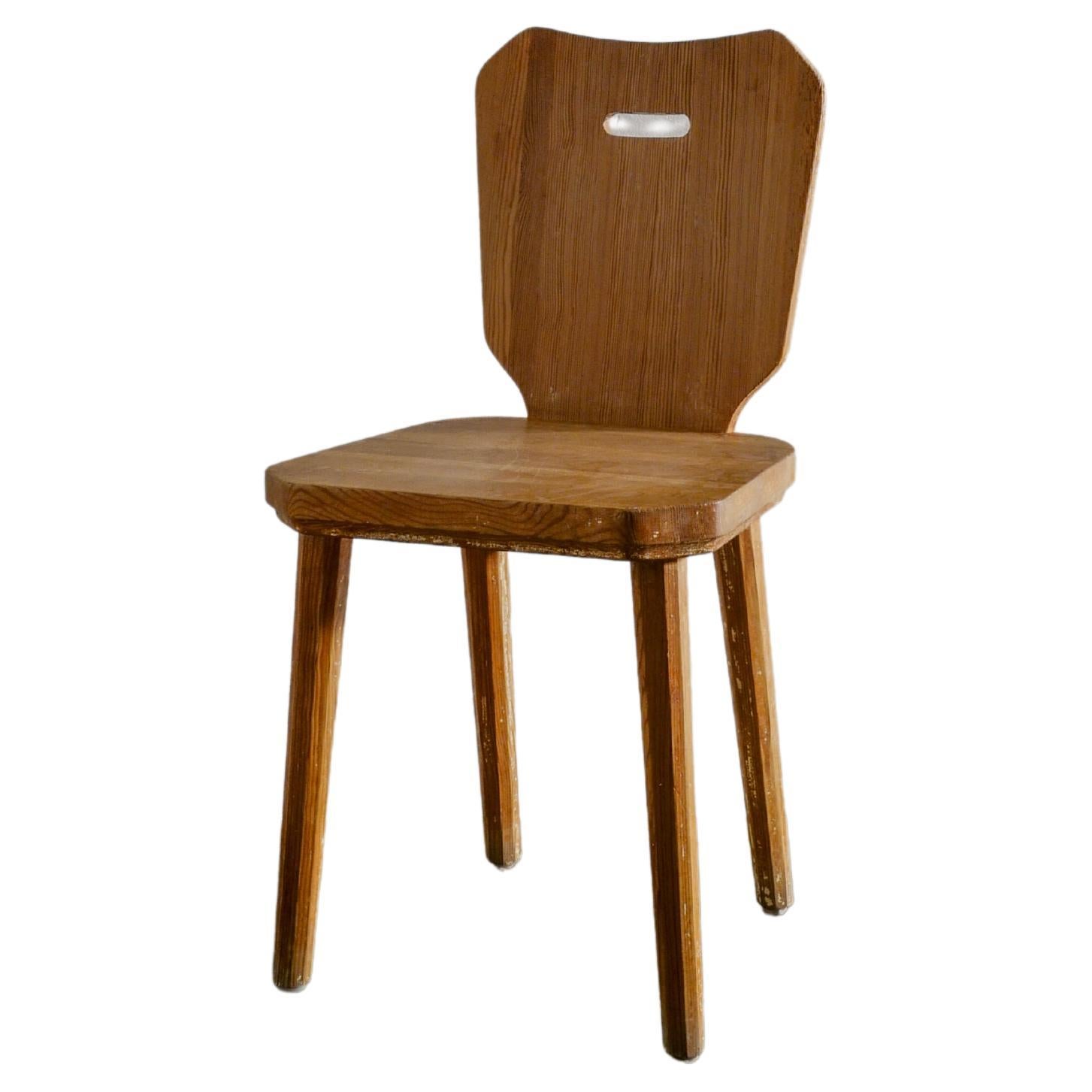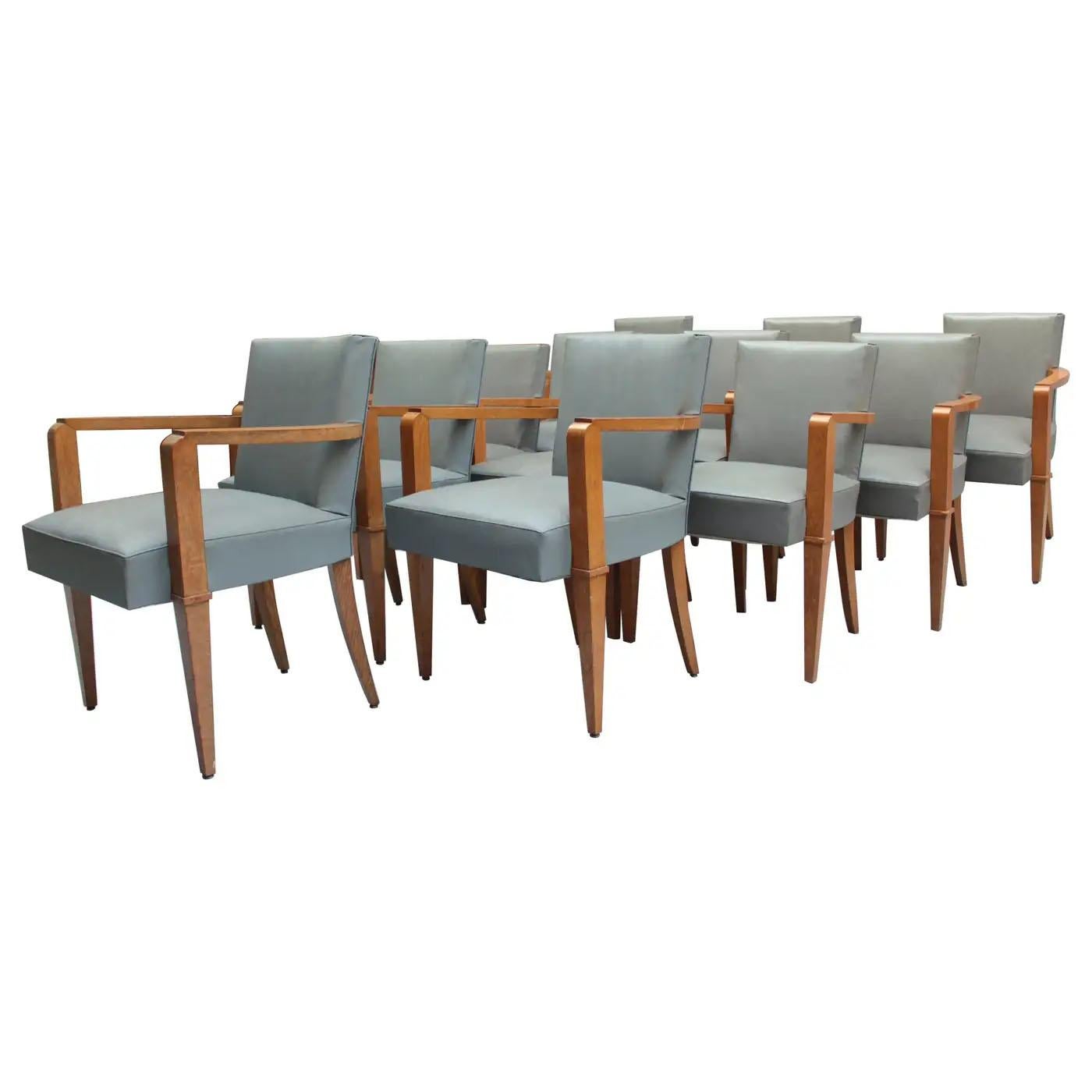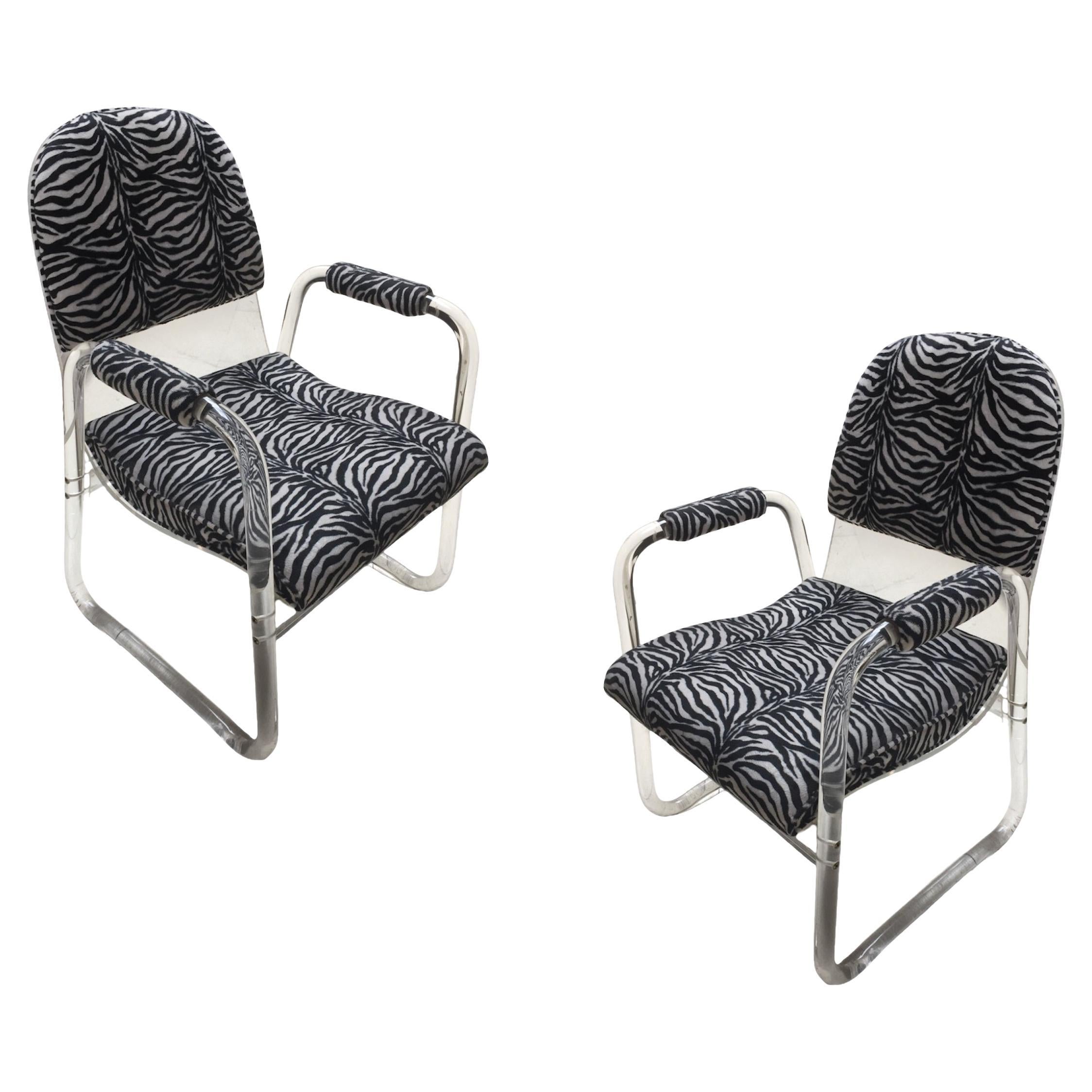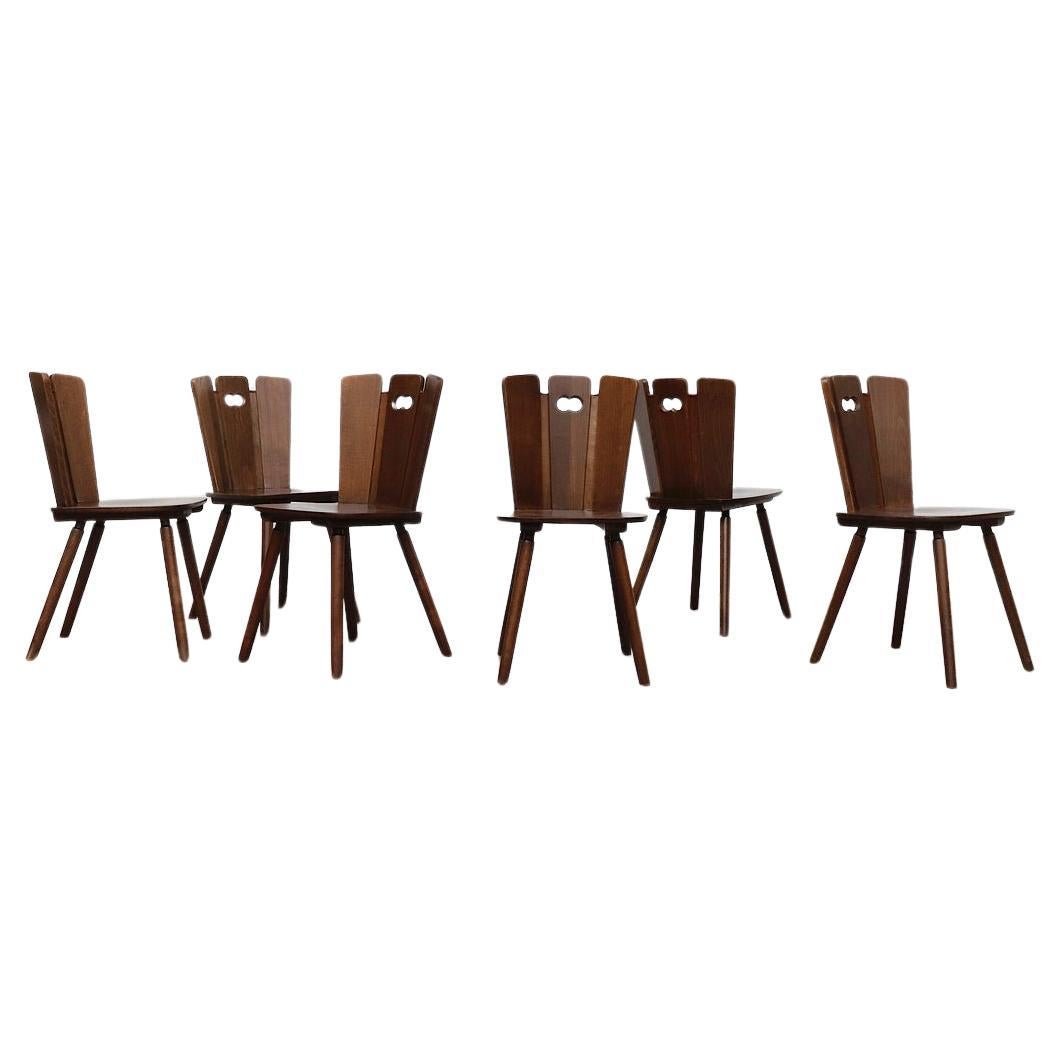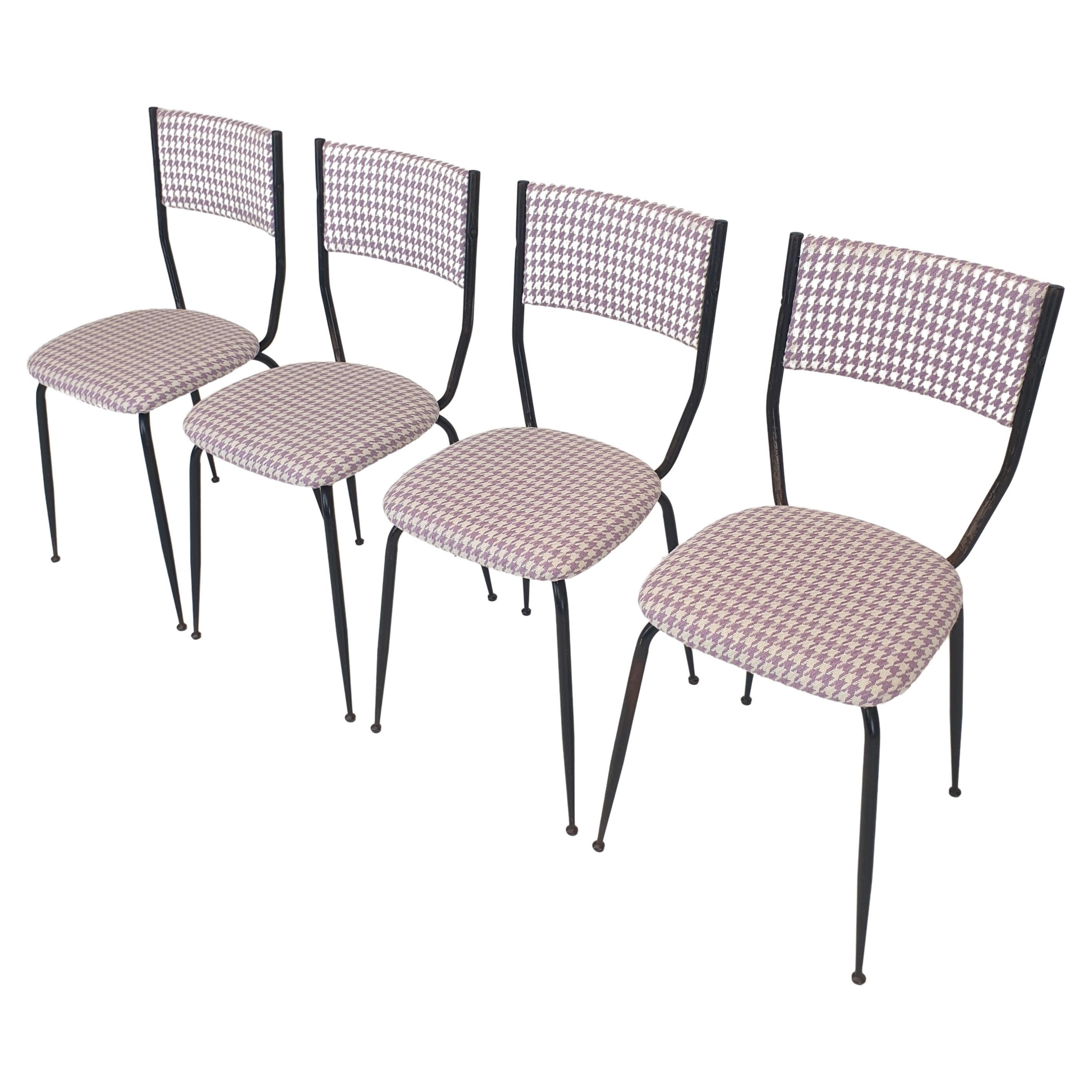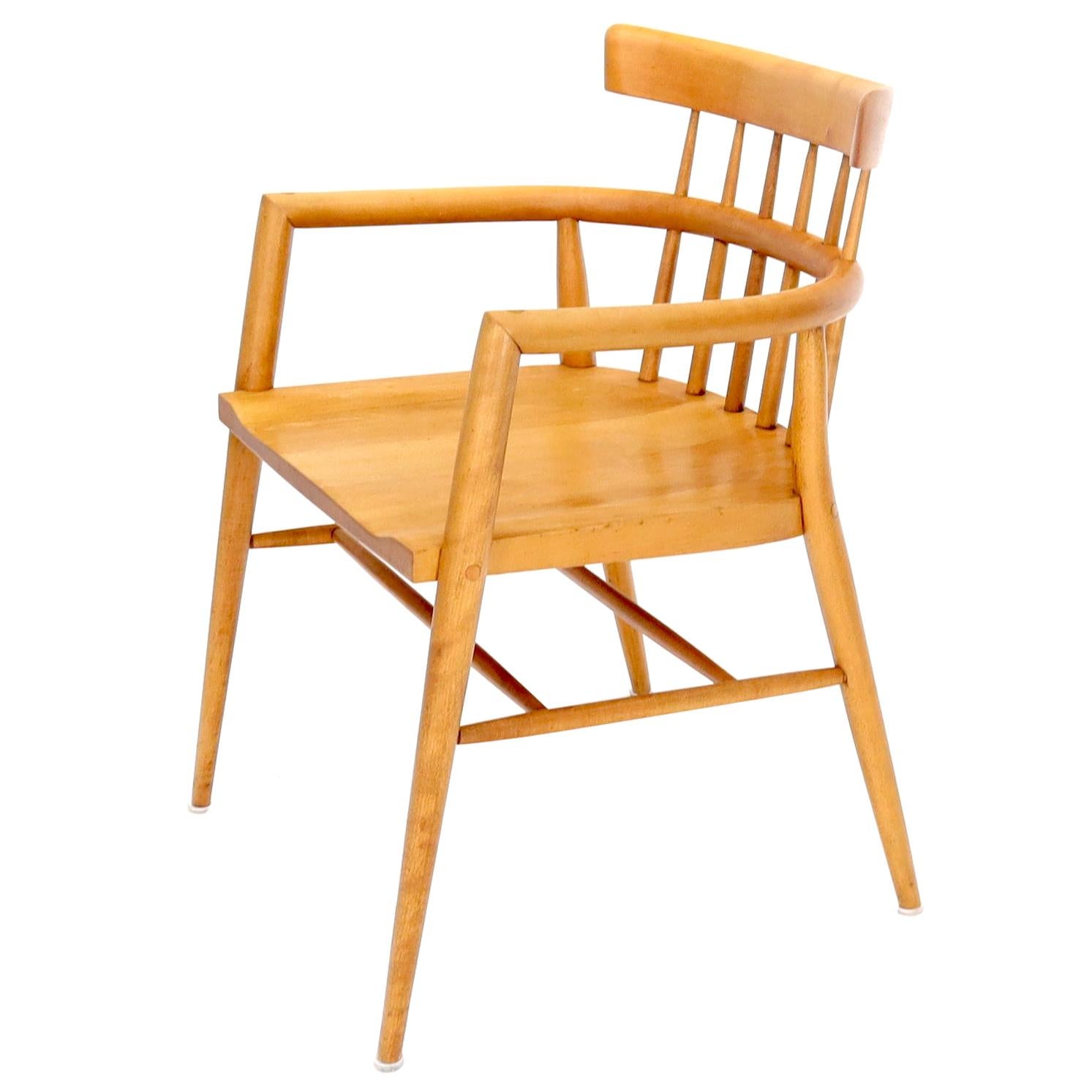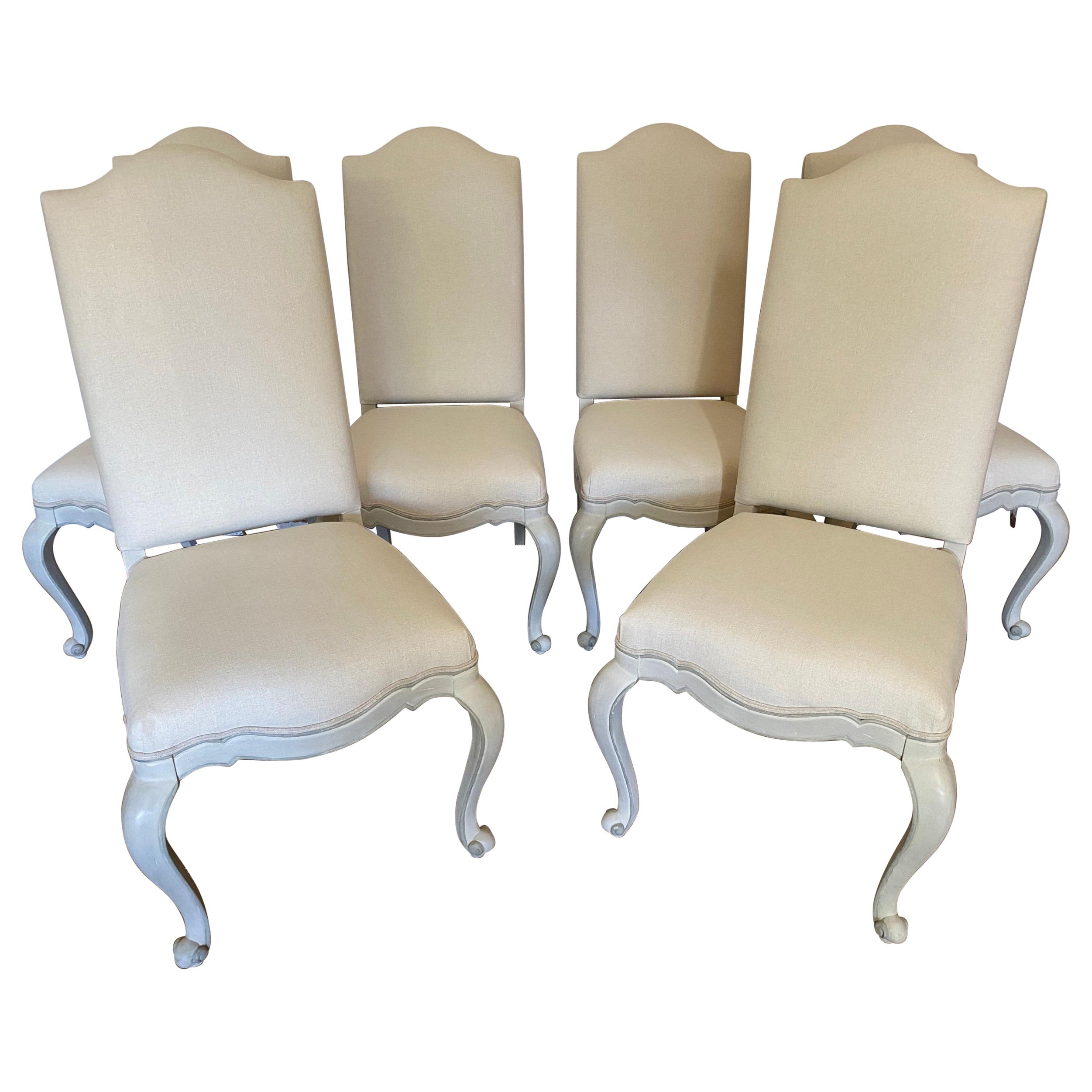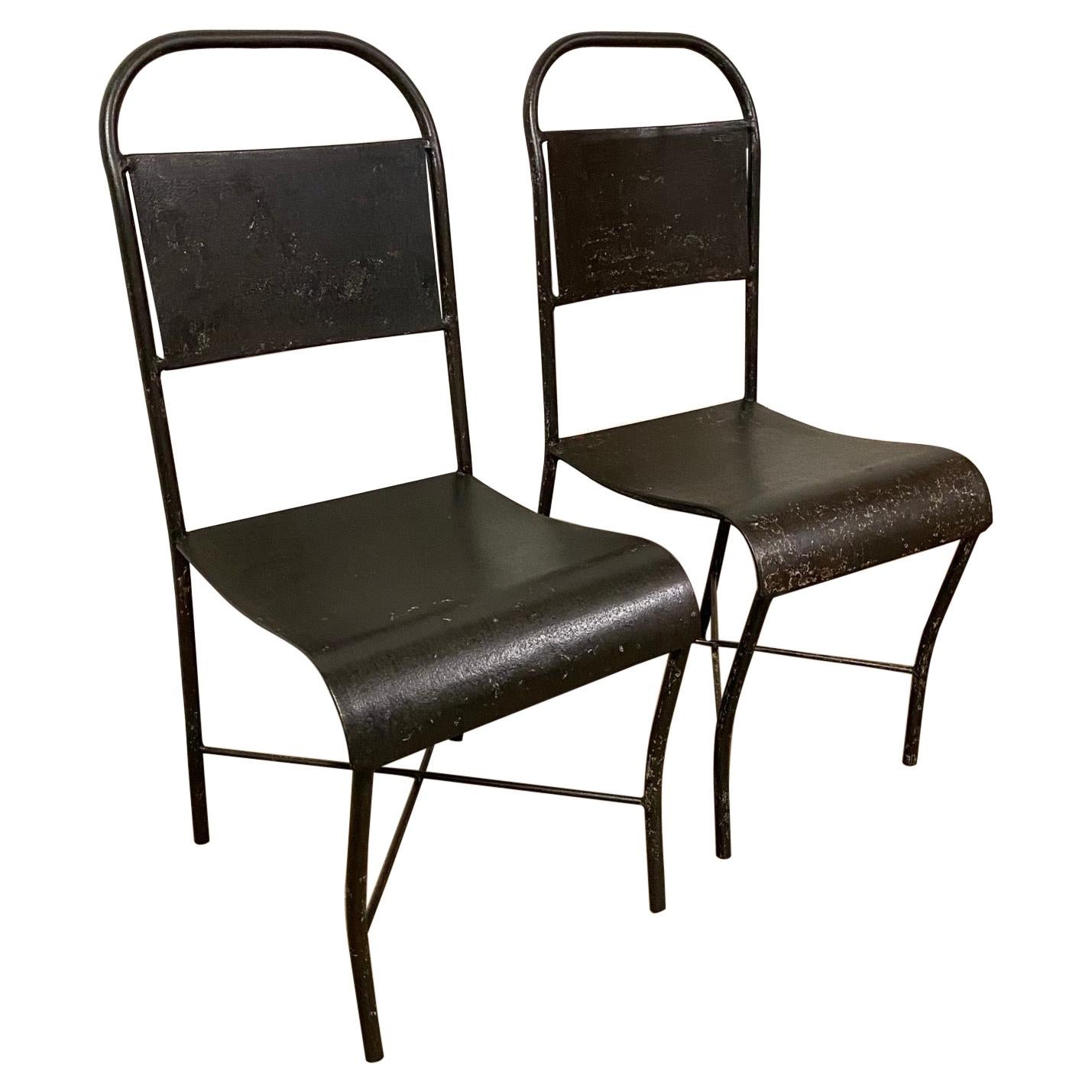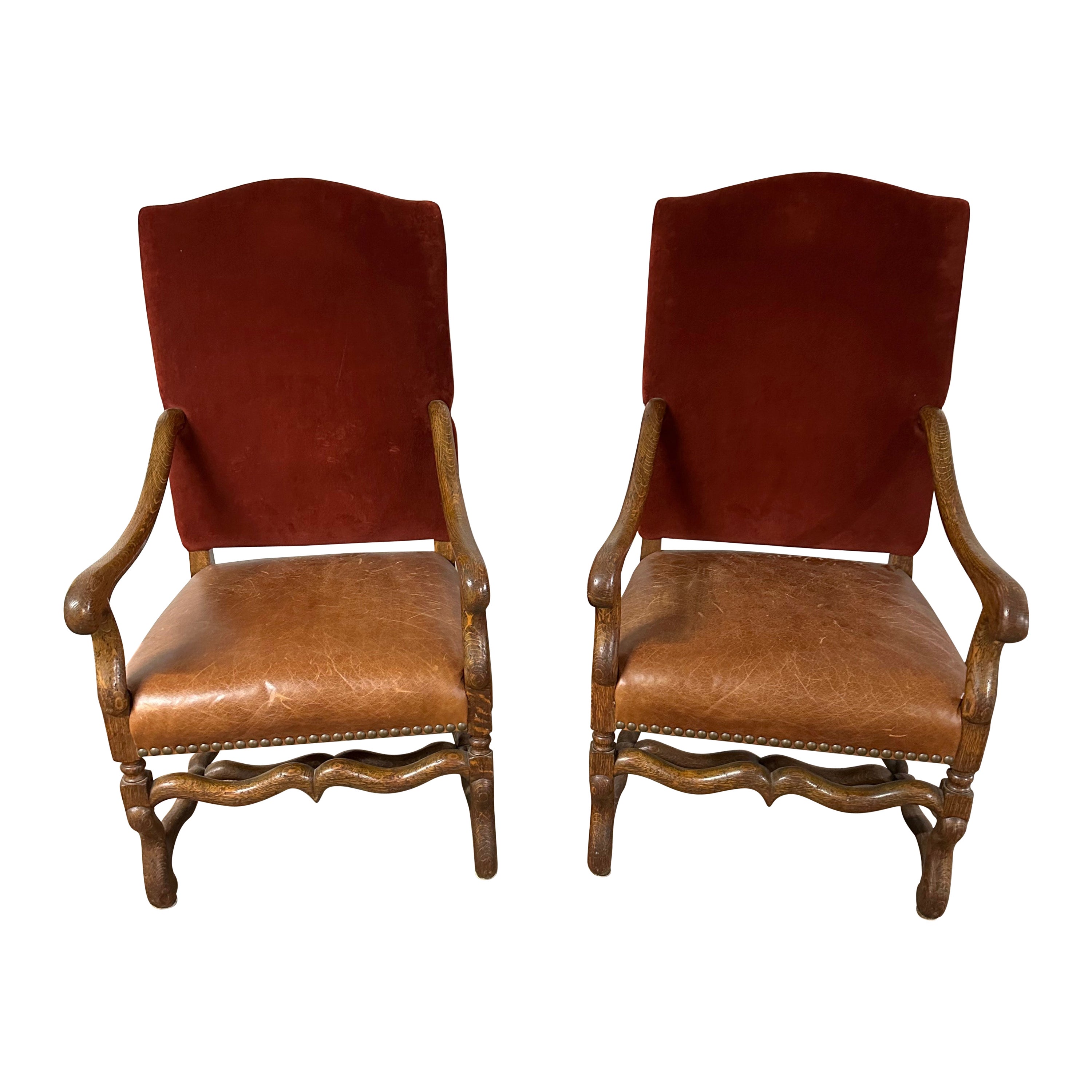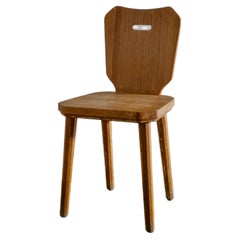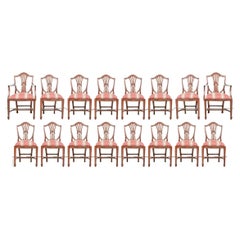
Pair of Italian, 1940s Height Back Chairs
View Similar Items
1 of 8
Pair of Italian, 1940s Height Back Chairs
About the Item
- Dimensions:Height: 39.38 in (100 cm)Width: 16.93 in (43 cm)Depth: 15.75 in (40 cm)Seat Height: 17.72 in (45 cm)
- Sold As:Set of 2
- Place of Origin:
- Period:
- Date of Manufacture:1950
- Condition:Wear consistent with age and use.
- Seller Location:London, GB
- Reference Number:1stDibs: LU104328388693
You May Also Like
- Göran Malmvall Dining Office Chair in Pine Produced in Sweden, 1940sBy Goran MalmvallLocated in Stockholm, SERare dining chair in pine designed by Göran Malmvall and produced by Svensk Fur in the 1940s. In good vintage condition with some signs from age and use. Perfect as side or office ch...Category
Vintage 1940s Swedish Scandinavian Modern Dining Room Chairs
MaterialsPine
- 11 Fine French 1940s Oak Armchairs by Jacques Quinet (price is per chair)By Jacques QuinetLocated in Long Island City, NYJacques Quinet (1918 - 1992) - Eleven fine French 1940s solid oak desk armchairs or dining chairs. Provenance: Reading room of the library of Rouen. Price is per chairCategory
Vintage 1940s French Art Deco Dining Room Chairs
MaterialsOak
- Very Fine Set of Sixteen Shield-Back Dining ChairsLocated in Bridgeport, CTA large and very well made set of Classic Mahogany Shield-Back Dining Chairs . With handsome softly grained wood, and a well-formed Frame with Classic Shield back with Stylized Back ...Category
20th Century Georgian Dining Room Chairs
MaterialsMahogany
- Pair of Solid Lucite Vanity Chair, 1940sLocated in Ciudad Autónoma Buenos Aires, CPair of solid lucite chairs We have specialized in the sale of Art Deco and Art Nouveau and Vintage styles since 1982. If you have any questions we are at your disposal. Pushing the button that reads 'View All From Seller'. And you can see more objects to the style for sale. Why are there so many antiques in Argentina? In the 1880 – 1940 there was a grate wave of immigration encouraged by the periods of war that were taking place. 1st World War took place between 1914 and 1918 2nd World War took place between 1939 and 1945 The immigrants options were New York or Buenos Aires. Tickets were cheap and in Buenos Aires they were welcomed with open arms, as it was a country where everything was still to be done. Argentina was the country of new opportunities, labour was needed and religious freedom was assured, in many cases the of the family travel first until they were settled and then the rest of the family members join them. In the immigrant museum “Ellis Island Immigrant Building” in New York you can se the promotional posters of the boats that would take them to a new life. Between the years 1895 and 1896, Argentina had the highest DGP (gross domestic product) per capita in the world according to the Maddison Historical Statistics index, this situation arose due to the large amount of food being exported to European countries, which were at war. The Argentinean ships left the port of Buenos Aires with food, but they returned with furniture, clothes and construction elements, (it´s common to see this the old buildings of the historic neighbourhood of San Telmo, the beams with the inscription “Made in England)”, as well as many markets that were built in Buenos Aires, such us the San Telmo Market, whose structure was brought by ship and afterwards assembled in 900 Defensa Street. With the great influence of European immigrants living in the country, the children of the upper classes travelled to study in France, resulting in the inauguration of “La Maison Argentinienne”, on 27th of June 1928, in the international city of Paris, which hosted many Argentinians that were studying in Frace. It´s the fourth house to be built after France, Canada and Belgium, being the first Spanish-speaking one. Still in place today (17 Bd Jourdan, 75014, Paris, France). Many of the children of these wealthy families who attended international art exhibitions, museums and art courses abroad, took a keen interest in the European style. This is why Buenos Aires was at the time referred as “The Paris of South America”. Between the years 1890 and 1920 more than a hundred Palaces were built on Alvear Avenue the most exclusive avenue in Buenos Aires. Today some of these palaces have been transformed into museums, hotels and embassies. In the year 1936, the Kavanagh building was inaugurated, it was the tallest reinforced concrete building in South America. During 1994 the American Society of Civil Engineers distinguished it as an “international engineering milestone”, and it´s now considered a World Heritage of Modern Architecture. At the time was common to hire foreign architects such as Le Corbusier, who visited Buenos Aires/Argentina in 1929 and in 1948 he drew up the blueprints for a house built in La Plata City (which was declared a World Heritage Site). In 1947, the Hungarian architect Marcelo Breuer designed “Parador Ariston” in the seaside city of Mar del Plata. After an Argentinean student at Harvard University convinced him to come to Argentina. He worked on an urban development project in the Casa Amarilla, area of La Boca. The Ukrainian architect, Vladimiro Acosta, arrives in Argentina in 1928 and worked as an architect until que moved to Brazil. Antonio Bonet, a Spanish architect who worked with Le Corbusier in Paris, arrives in Argentina in 1937, where he carried out several architectural works and in 1938 designs the well-known BFK chair...Category
Vintage 1940s American Space Age Office Chairs and Desk Chairs
MaterialsLucite
$12,000 / set - Set of 6 Gilbert Marklund Style Fan Back Brutalist Dining ChairsBy Gilbert MarklundLocated in Los Angeles, CASet of 6 Gilbert Marklund style Brutalist dining chair in original condition with fan-top seat backs and copper detail. ...Category
Vintage 1970s Dutch Mid-Century Modern Dining Room Chairs
MaterialsCopper
- Set of 4 Italian Metal Dining Chairs, 1960'sLocated in Oud Beijerland, NLBeautiful set of 4 Italian armchairs, 1960s. Made of black lacquered steel. The chairs are restored with new fabric and new foam, they are in perfect condition. They are reupholster...Category
Vintage 1960s Italian Mid-Century Modern Office Chairs and Desk Chairs
MaterialsSteel
$3,613 / set
